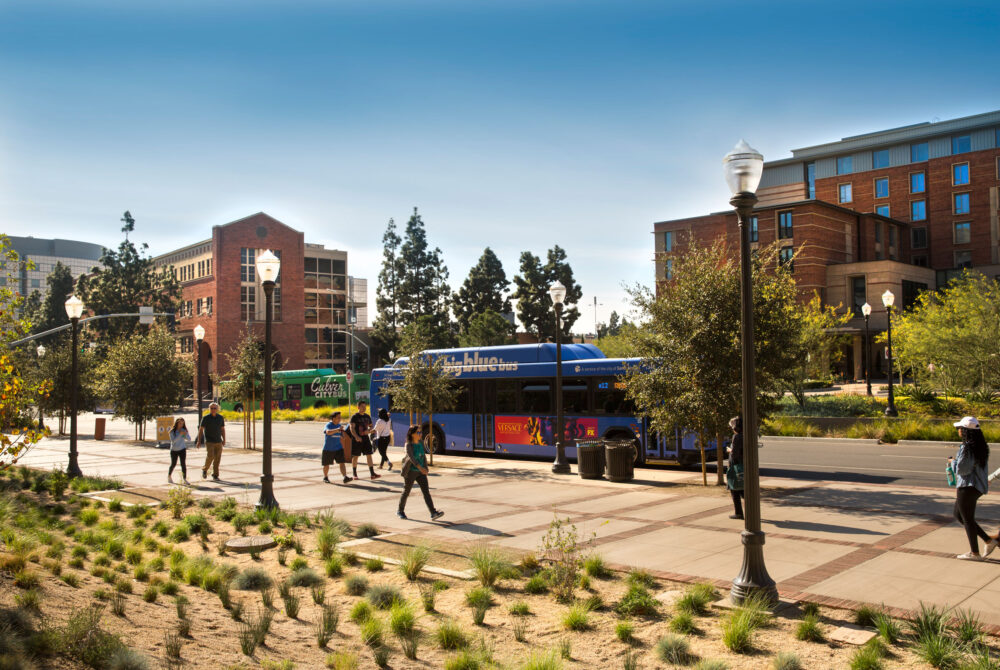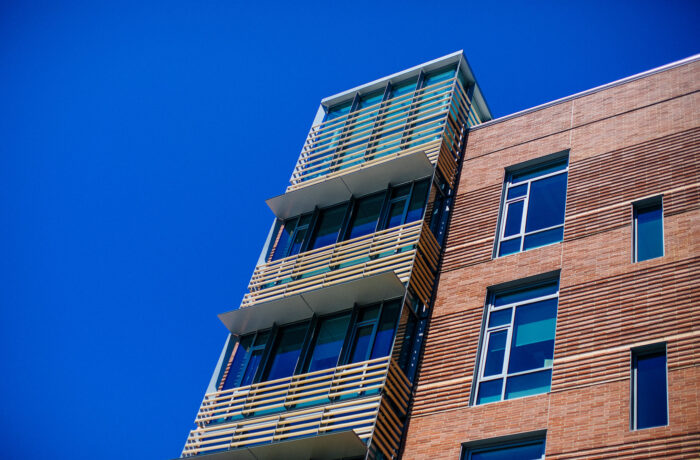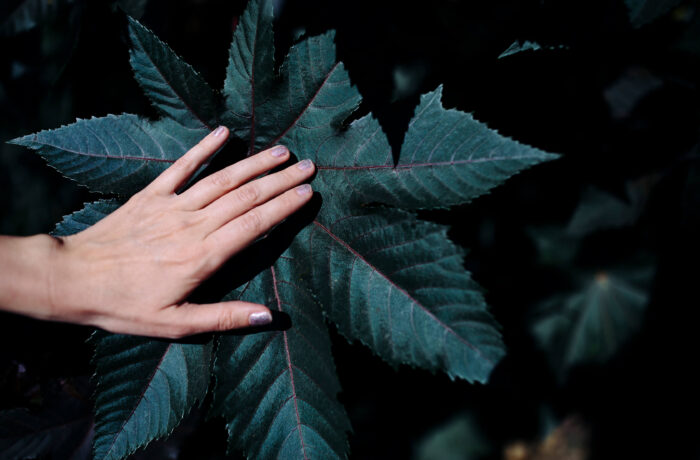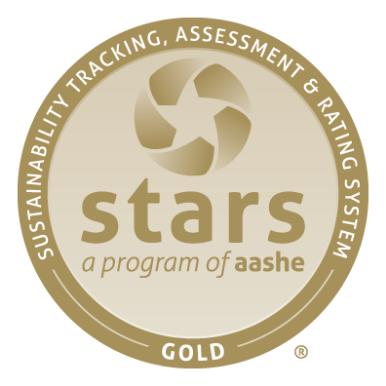2020 brought unprecedented challenges to the campus and demonstrated the resilience of the UCLA community. Programs during the pandemic ranged from the Basic Needs COVID-19 Resource Guide to Dining Services providing 360,000 meals to Venice Family Clinic, a health care clinic that provides services to underserved communities. Additionally, Housing and Hospitality planted fruit trees in family housing communities and released an updated Sustainability Strategic Plan.
The pandemic and the worsening impacts of climate change both highlight the disproportionate impacts on vulnerable communities and the need to address justice, as well as equity, diversity and inclusion. A 2020–21 Sustainability Action Research team conducted an Assessment of Equity, Diversity, and Inclusion Efforts in the UCLA Sustainability Community Through Student Experiences with recommendations that will guide the campus’s sustainability efforts.
Beyond campus, the Sustainable LA Grand Challenge released a comprehensive Ecosystem Health Report Card for Los Angeles County, in which more than a dozen UCLA researchers and students took the full measure of Los Angeles County’s land use, biodiversity and looming environmental threats — and those factors’ impact on residents’ health and well-being.
In preparation for the return to campus, UCLA developed a Single-use Plastics Implementation Guide to assist departments in transitioning under the new policy as well as a Food Recovery Implementation Guide to address redistribution of food and reduce waste on and off campus. Moving forward, UCLA will evaluate ways to build on the 2020 reductions in waste and commute emissions through FlexWork and other programs.

CLIMATE PROTECTION – EMISSIONS
UCLA’s greenhouse gas emissions declined during the 2020–21 fiscal year. In addition to continued energy efficiency efforts and reductions in energy use and commute emissions during the pandemic, UCLA obtained solar energy from the 10-megawatt renewable rate agreement with the Los Angeles Department of Water and Power. (At the time of data collection, campus greenhouse gas emissions were not yet third-party verified. Updates will be made, as needed, in future reports.)
ENERGY – RENEWABLE ELECTRICITY GENERATION
ENERGY USE INTENSITY (EUI)
UCLA saw a decrease in its EUI in the calendar year 2020; this also includes UCLA Health’s EUI data.
FOOD
During fiscal year 2020–21, the pandemic-related closure of nearly all locations served by the Associated Students of UCLA’s retail food service resulted in dramatically reduced proportions of sustainable and plant-based food, as well as donations of recovered food. However, UCLA increased its sustainable food purchases by about 3 percentage points, partly by focusing on procuring more sustainable seafood.
Green building
UCLA currently has 56 LEED certifications. The campus added two new LEED certifications — Gold for DeNeve Bakery and Platinum for Pritzker Hall — building upon three certifications the prior fiscal year and followed by another Silver certification in July 2021. In May 2021, the Los Angeles chapter of the U.S. Green Building Council recognized UCLA’s green building program for excellence, and it named UCLA’s Margo Leavin Graduate Art Studios building its Sustainable Project of the Year.
17 Platinum, 28 Gold and 11 Silver
Total number of LEED certifications
procurement
At the time of this report, sustainable procurement data was not yet available for fiscal year 2020–21. Fiscal year 2019–20 data is available in the 2020 Annual Sustainability Report.
Sustainable Building & Laboratory Operations
total assessed research labs
Due to the pandemic and limited campus population, work on the Green Labs action plan had to be delayed. Two additional labs started the green certification process and several virtual open houses were held.
Transportation
With 70% of employees and nearly 77% of students telecommuting, UCLA’s commuting carbon footprint shrank dramatically. Greenhouse gas emissions from commuting totaled 50,980 metric tons in 2019 and went down to 25,738 in 2020. Sustainability gains were made in other areas as well. An award-winning transit pass program and bike rental program for graduate students were launched. The campus acquired three new zero-emissions vehicles, with continued alternative fuel use saving nearly 5,000 gallons of fuel and an estimated 71 metric tons of carbon dioxide for the year. Level-3 fast-charging stations were installed in two university parking areas, and a bike route connection into the campus was completed.

of UCLA employees on campus at UCLA Reagan Hospital are utilizing alternative commuting methods

EV charging stations at this location for 2020-2021

of light-duty vehicles acquired in 2021 were electric (zero-emission) or hybrid vehicles
WATER
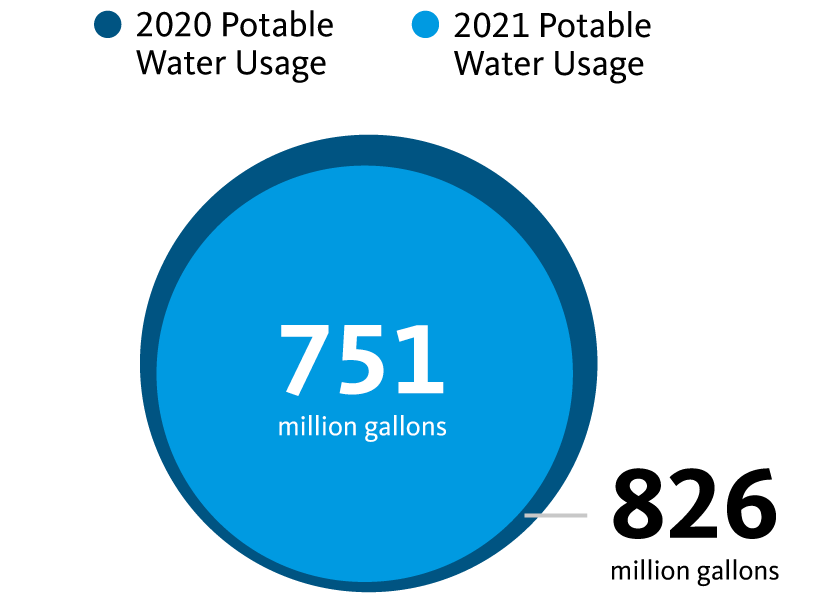
UCLA reduced its overall water use in fiscal year 2020–21, a savings of over 75 million gallons. However the reduction was not proportional to the reduction in population on campus because a significant portion of UCLA’s water use is driven by infrastructure, such as the cogeneration plant and grounds, as well as the need to continue hospital and critical research operations. This year’s report illustrates the difference in water consumption between fiscal year 2019–20 and fiscal year 2020–21 instead of measuring progress toward the 2025 goal. This data also includes UCLA Health’s water use.
ZERO WASTE – GENERATion
While UCLA’s waste generation significantly decreased across the board as a result of the pandemic (recycling by 53%, organics by 26% and landfill by 41%), essential staff maintained the campus while lab buildings continued research at a limited capacity, generating relatively large amounts of landfill waste such as personal protective equipment and lab-related single-use disposables for the number of people on campus. However, the majority of the campus nonessential staff and students worked and learned remotely, resulting in a 39% drop in total municipal solid waste. Residence halls housed a small population of students and all major events were cancelled, resulting in a 73% drop in food waste.
ZERO WASTE – DIVERsion
While overall diversion stayed similar to the previous year, landfill, recyclables, reusables and food waste decreased while green waste stayed the same, which mantains the diversion rate. Throughout the year, new infrastructure was placed across campus buildings, increasing accessibility to the compost and recycling streams, and occupants transitioned to a centralized waste collection, requiring occupants to have more accountability in sorting their waste.
Awards
UCLA was the proud recipient of an AASHE STARS Gold rating in 2020.
A full list of awards is featured on the UC Office of the President’s website.
 Sustainability Annual Report 2021
Sustainability Annual Report 2021